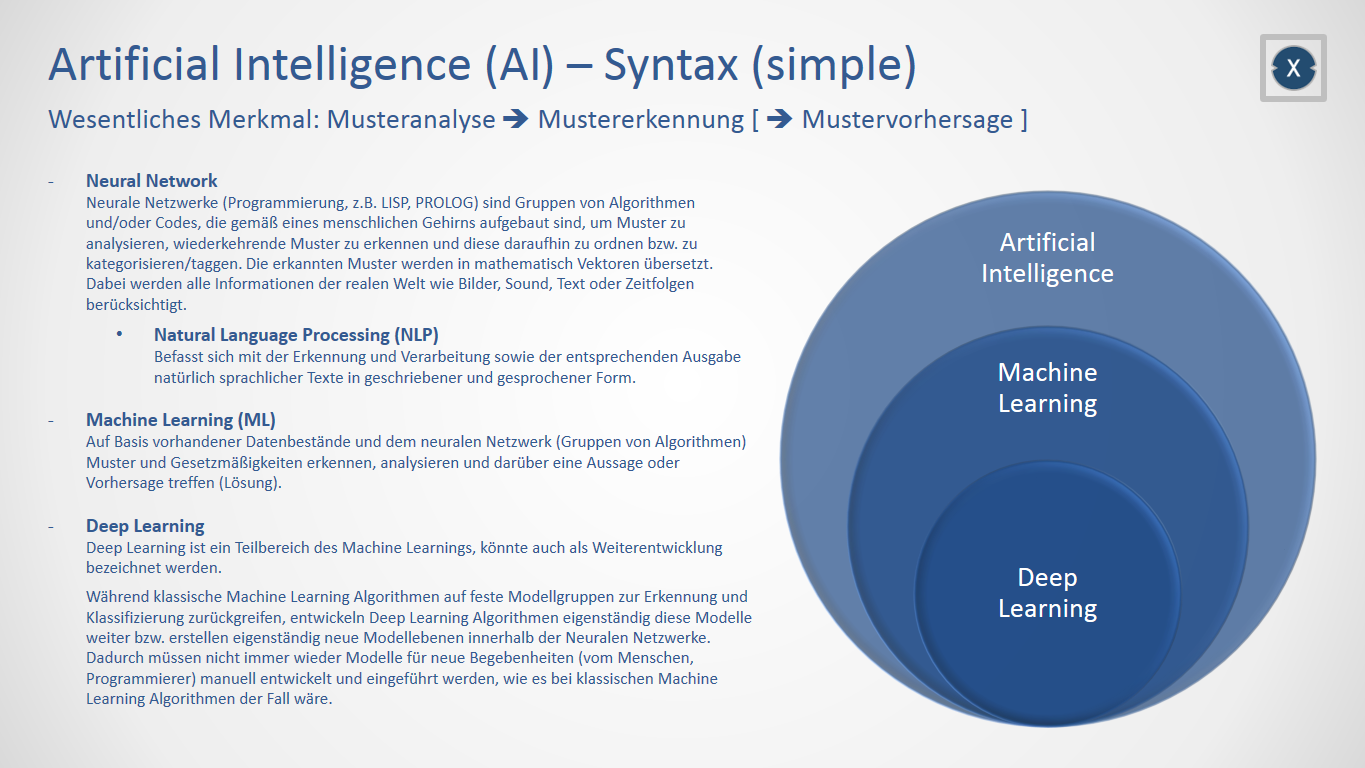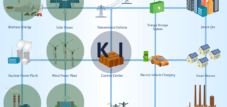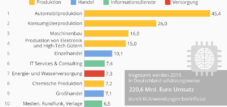Artificial intelligence made simple
Language selection 📢
Published on: October 31, 2018 / Update from: April 8, 2019 - Author: Konrad Wolfenstein
Artificial intelligence simply explained. Maintaining an overview in the mass, e.g. Big Data? This is only possible if you follow certain patterns or let yourself be guided.
A self-experiment: You have a certain image in your head. Today it should be a red cabinet with white handles. What are you doing?
In the Google search “cabinet red, white handles”.
Yield? Modest.
Attempt 2: You enter “Red Cabinet, White Hands” in the Google Search.
The result is already better, but could certainly be even better.
The first step into programming is taken with the Google search. The collection of search queries and the conversion of them into algorithms and codes form the neural network.
Machine learning, as shown in the top graphic, is therefore not a thing for quick implementation. A lot of time and work goes into it. This also explains the corresponding development costs. But if you consider that the AI has no vacation, no pension or other natural losses, things look completely different.
But is the red cabinet with white handles still up to date tomorrow? Does it still fit the lifestyle? Tastes change. This is exactly where the deep learning comes in. To stay with our example: With the further search, the AI learns and, based on the other topics that are interested in how your search behavior has changed and independently, develops new algorithms to “predict” that a green cabinet with blue handles could be interested in the kitchen in one year.
Terrible? For some this is frightening. But it's actually not. The fear of the unknown plays tricks on us. If we asked a group of people what might interest you on TV tomorrow, you would get a variety of answers. Not uniform. Now, how do you decide which proposal you would accept? Is it the professional contribution or the attractive appearance of the person in question?
That's how it is with the AI. Depending on how weak or strong the neural network has been “programmed”, the statement is accordingly. It is about pattern analysis that should help us make a good decision. Not to control us. Because if we do not create sample analysis in the big data, we mercilessly go under. And that's the real horror scenario.































